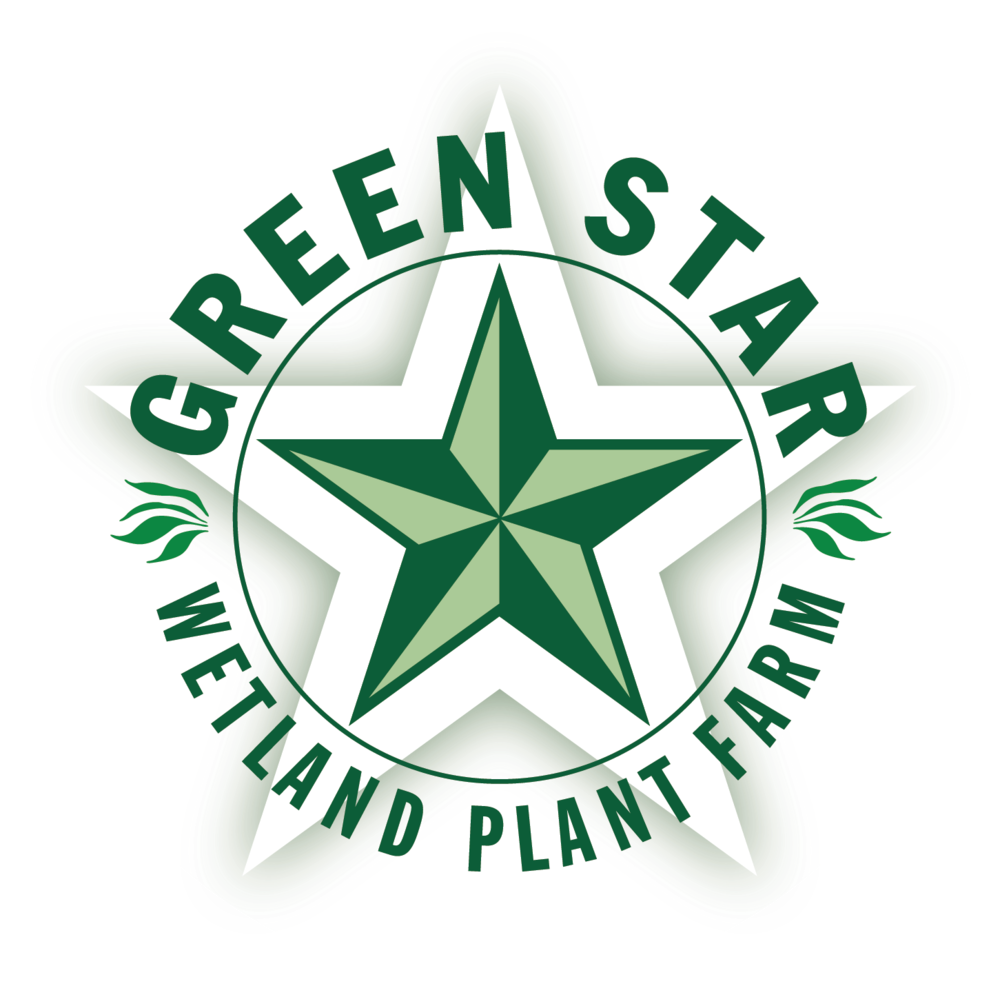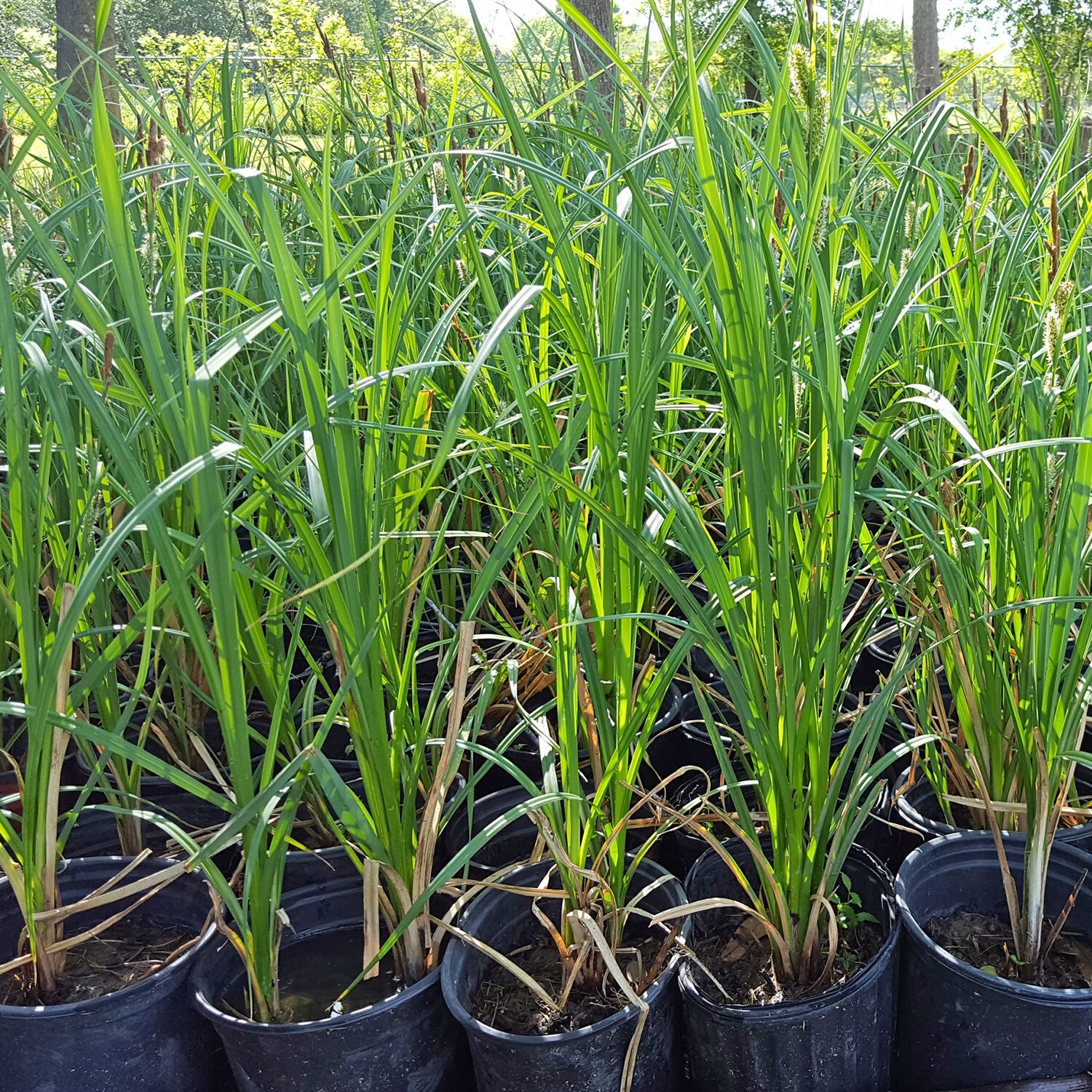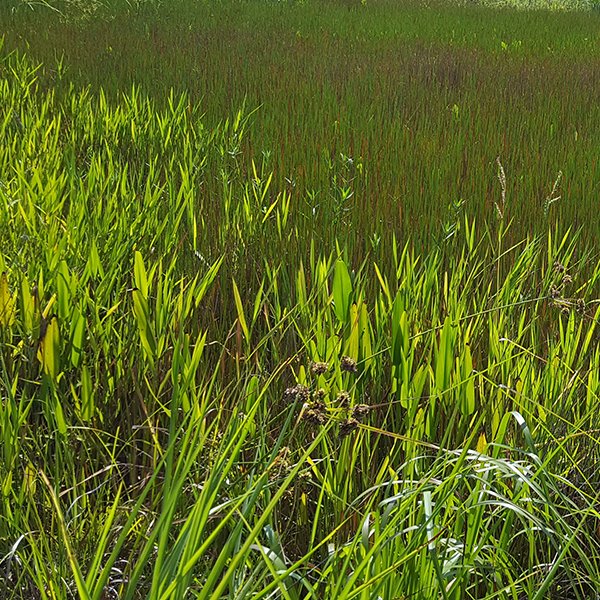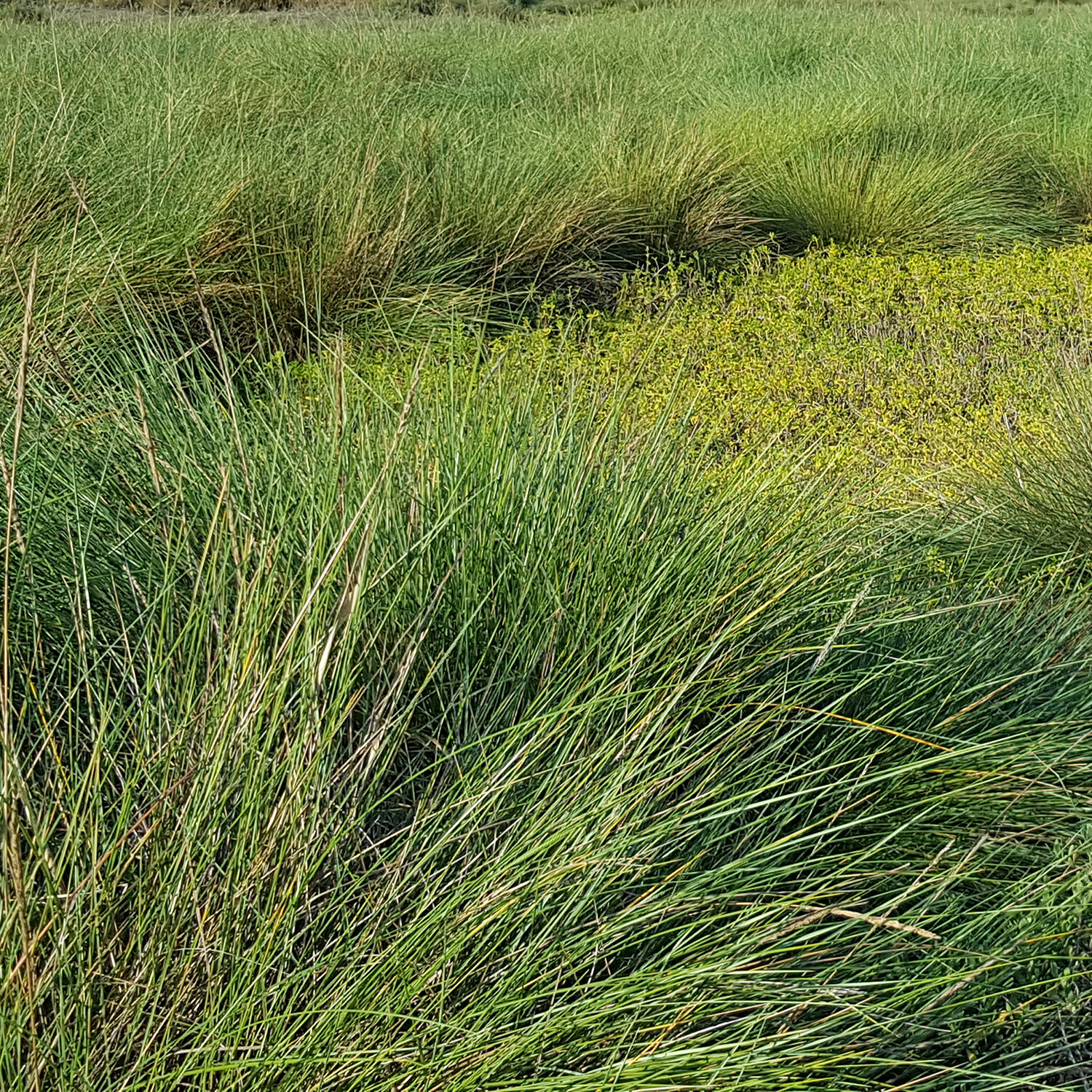Sedges & Grasses
Bushy Bluestem
(Andropogon glomeratus)
An adaptable clumping grass for wet prairies, swales, rain gardens and pond margins, Bushy bluestem looks great either massed for effect or planted singly. The fluffy seedheads in the fall catch the light beautifully. Nutria seem to dislike the foliage.
ANGL2, FACW
cherokee sedge
(Carex cherokeensis)
What makes this humble 12” clump of fine foliage just about the most frequently requested of all our plants? It thrives in a wide variety of conditions—sun or shade, wet or dry, clay or normal garden soil, and it’s evergreen. A mass planting in a woodland setting or rain garden is unforgettable. Replace exotic groundcovers like monkey grass and vinca with Cherokee sedge to get the ecological benefits of a native plant. Deer resistant, but said to attract songbirds with its grain-like seeds.
CACH3, FACW
shoreline sedge
(Carex hyalinolepis)
Sedges don't get the spotlight like, say, iris and water lilies, but they are often the backbone of the wetland plant community. Here's Shoreline sedge, a 2'-3' tall blue-green freshwater plant which can colonize thickly and quickly to prevent erosion and shade out invasive seedlings. Also, it's one of just a few wetland species that are evergreen in our region.
CAHY3, OBL
inland sea oats
(Chasmanthium latifolium)
This low-maintenance 2’ clumping perennial grass prefers shade, and thrives in damp or dry soil. Its native habitat is stream edges, but doesn’t tolerate standing water. The graceful seed heads, sometimes described as looking like fish on a pole, can be cut for flower arrangements.
CHLA5, FAC
Maidencane
(Panicum hemitomon)
A foundational wetland species, this one should be planted where it can dominate. Maidencane likes to grow in standing water up to 6” inches deep. In fall it turns a beautiful straw color.
PAHE2, OBL
Switchgrass
(Panicum virgatum)
The landscape trade has developed varieties of this grass, but this is the Gulf Coast original. A tall clumping grass with airy seedheads in late summer, it prefers wet soil but can take dry periods as well as several days of inundation. Grazers love this grass.
PAVI2, FAC
savannah panic grass
(Phanopyrum gymnocarpon)
Another grass species for shaded wetlands, Savannah panic grass grows best in consistently wet soil. It can form extensive stands of 2’ tall grass that provides habitat and erosion control. The stems bend over and new plants can grow from the nodes that touch the ground.
PHGY, OBL
whitetop sedge
(Rhynchospora colorata)
This short 12” sedge announces itself in mid-spring with masses of white inflorescences. The actual flower is an insignificant cluster at the center of the eye-catching star-shaped bracts. It will re-bloom in wet meadows and ditches all summer if it is occasionally mowed.
RHCO7, OBL
Sugarcane plume grass
(Saccharum giganteum)
With its fluffy seedheads glowing pinkish-white in the autumn sun, Sugarcane plume grass has great landscape potential. This 6’ tall (or more) clumper wants moist soil but not standing water. It is often seen near wood’s edge but needs at least half day of sun. This native is a relative of commercial sugarcane.
SAGI, FACW
salt meadow cordgrass
(Spartina patens)
A meadow of Spartina patens makes a gorgeous sight, creating dynamic waves of green as it grows. As an essential component of coastal marshes from the Gulf to New England, this cordgrass is naturally found near brackish water bodies, or even growing on gulf dunes, but also does well in coastal freshwater settings. As an example, the patch shown here is at Exploration Green Park in Houston.
SPPA, FACW
gulf cordgrass
(Spartina spartinae)
This Cordgrass grows in statuesque clumps up to 3’ tall (unlike Saltmeadow cordgrass, which runs). Its grass blades are often rolled up, tinged blue green, and pointed at the end. It is tolerant of a wide range of soil, from salty sand to garden soil.
SPSP, OBL
Eastern Gamagrass
(Tripsacum dactyloides)
Eastern gamagrass is considered an "ice cream grass" for cattle, and in places it has nearly disappeared from its vast natural range. But this large bunch grass is a foundation species of wet meadows. Give it a space six feet across for a specimen, or plant dense stands for a wet prairie restoration or nutrient filter strip.
TRDA3, FAC












